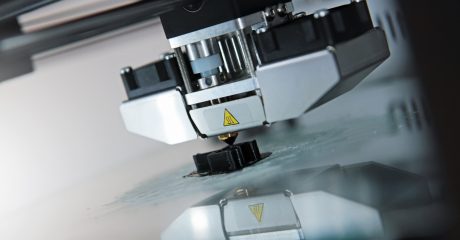Traditional jewelry design practices, such as hand drawing and drafting, are still commonly used in jewelry production. However, many jewelry designers turn to computer-aided design (CAD) software and 3D printing to create unique jewelry prototypes. By using a CAD model of a ring, bracelet, or earrings, a jewelry prototype can easily be reproduced. This is easier than traditional jewelry design practices that require extensive expertise to reduce errors and time.
Effects of Rapid Prototyping
Rapid prototyping has many effects on different manufacturing industries, and the jewelry industry is no exception. Below is a list of just a few:
- It Reduces Production Time – Generally, with rapid prototyping, jewelry manufacturers can rapidly produce a jewelry prototype for casting. As a result, it allows jewelry designers to focus more of their time on the design phase. For example, it becomes easy to develop new and creative designs and tweak the jewelry prototype until they are just right.
- It Reduces the Chances of Errors – Rapid prototyping processes are becoming more popular with jewelry designers because they reduce the chances of encountering errors. Now, jewelry designers can make a prototype, check for flaws and errors, and ultimately correct such errors.
- It’s Cost Effective – The traditional method of jewelry making has a higher cost based on the intricacy of the design, how the designer came to design it, and the quality of their products. This “handmade” part of the traditional method of jewelry design makes it more costly than the rapid prototyping jewelry production processes.
How 3D Printing is Transforming the Jewelry Industry
3D Printing as a rapid prototyping process has hugely transformed jewelry production. Below are the several ways by which it has done this great job:
- It Increases Design Freedom – 3D printing can put a lot of power back into the hands of jewelry designers and it unlocks higher levels of design freedom. The details and geometries that 3D design and printing are capable of capturing are truly awe-inspiring. Lattices and complex hollowed-out structures are exciting uses of 3D Printing, which you can’t achieve using other methods.
- It is Less Costly – Another vital benefit of using 3D printing in the jewelry design phase is that it has a lesser cost. Thanks to technology, jewelers can rapidly prototype wearable pieces from low-cost plastic materials to get a sense of what the final piece will look like. Seeing and holding a jewelry prototype enables designers to check the fit, proportions, and overall look of the piece in question. Suppose the jewelry prototype has a flawed design or is not up to the designer’s standards. In that case, you can easily edit and reprint it, all without adding significant material costs or time.
- It Improves the Production Process – Beyond prototyping, 3D Printing also plays an increasingly important role in jewelry production. A popular example of this is an updated take on the age-old technique of wax casting. Wax casting is a process that consists of using a wax model to produce an identical replica from precious metals. However, today, it is possible to 3D print jewelry models instead.
Call Custom Tool Today!
We hope our blog helped you learn a thing or two about rapid prototyping and 3D printing. To get your next project started, contact our experts at Custom Tool.
